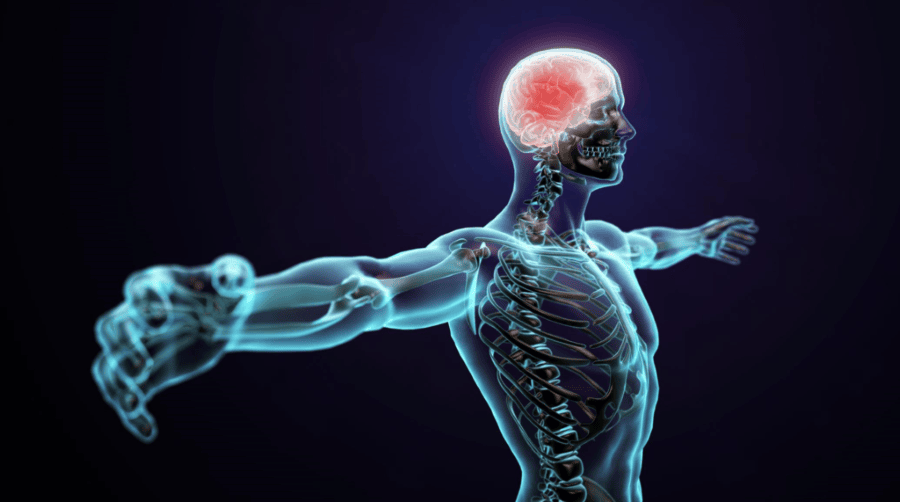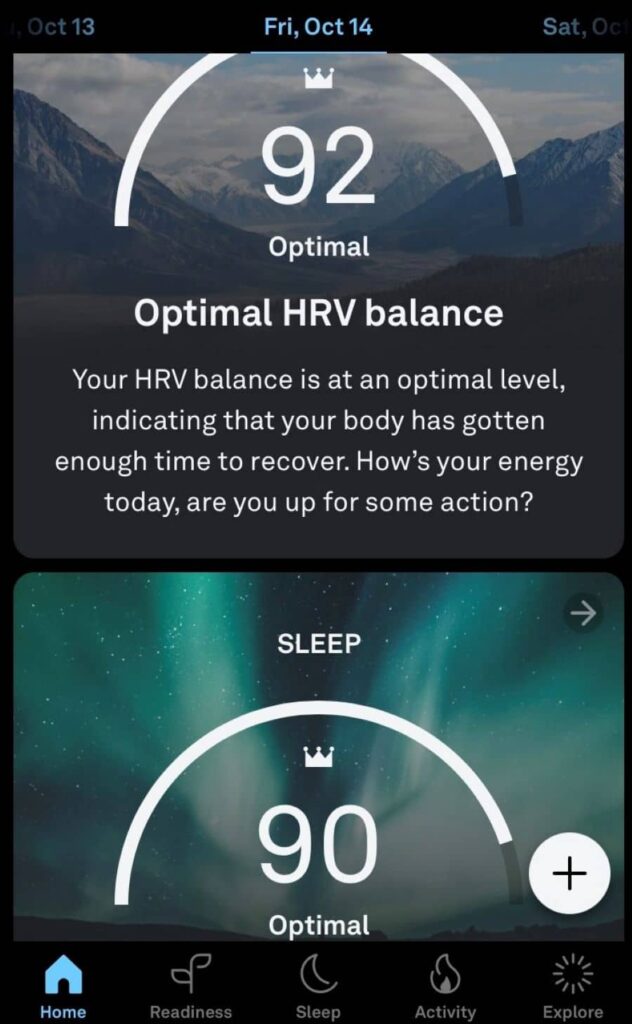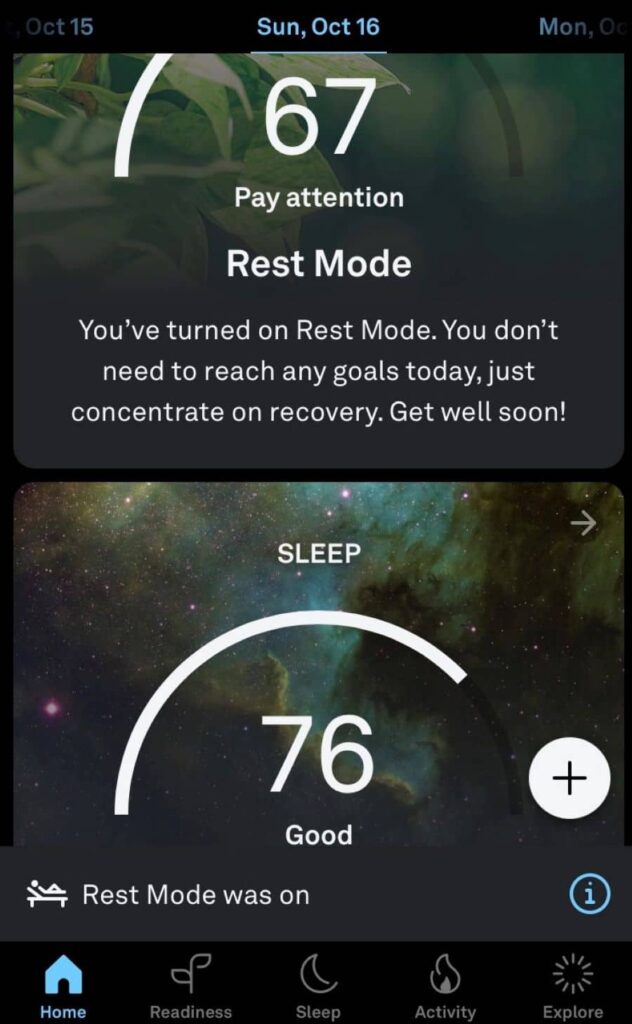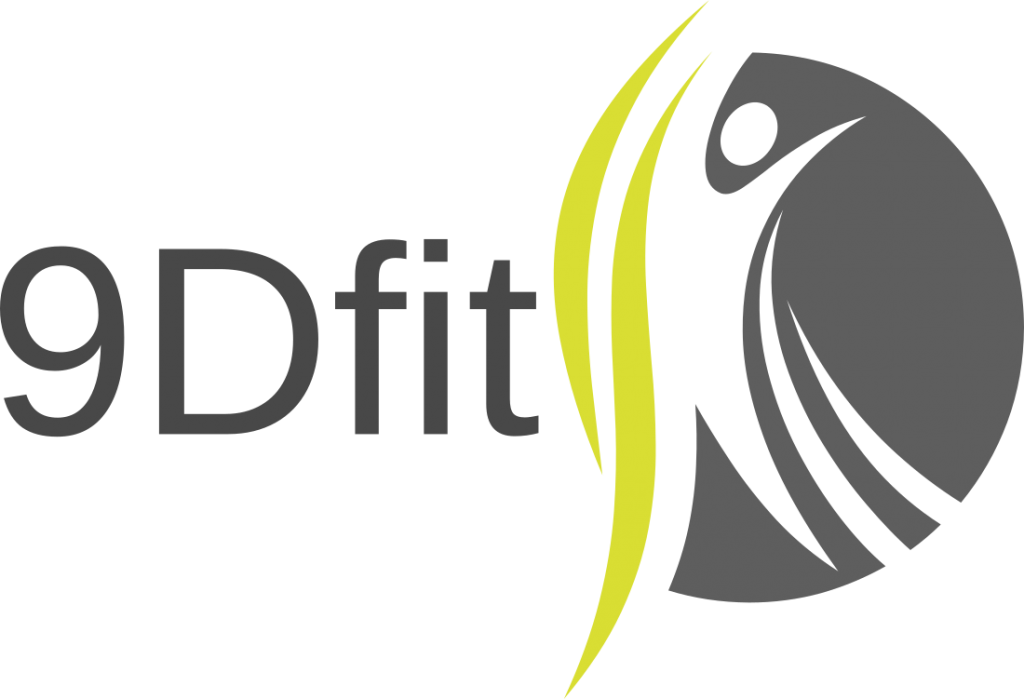Interested in learning how to improve your heart rate variability?
You’ve come to the right place.
At times, you’ve probably felt llike your heart has a mind of its own, beating faster than we’d like them to when we’re stressed or anxious.
Heart rate variability has become a buzzword in the world of health and fitness. But not everyone knows what it is or why it’s important.
In this article, we will dive into the world of heart rate variability. We’ll explore its benefits, how it works, factors that can affect it, and some surprising tips to improve it.
So, let’s dive in and explore how to get your heart beating at its best.
HRV 101: What is Heart Rate Variability?

Heart rate variability (HRV) is the variation in the time interval between heartbeats. It is influenced by the autonomic nervous system, which controls many of our body’s involuntary functions, such as breathing, digestion, stress response, and more. .
HRV is a measure of the balance between the sympathetic (fight or flight) and the parasympathetic (rest and digest) systems. A higher HRV is associated with a better balance between these two…and better overall health. A lower score can be reflective of poor balance and some potential health problems.
How Does Heart Rate Variability Work?
The autonomic nervous system regulates not only the heart but also other organs and systems in the body. The sympathetic and parasympathetic branches of the nervous system function as a seesaw. When one is dominant, the other is suppressed. To learn more about what happen when this imbalance is severe, check out Dr.Joaquin Farias’ excellent book Limitless: How Movements Can Heal Your Brain (or check out this Ted Talk video).
How do you respond when you cant find your keys?
When we experience stress, the sympathetic branch takes over, causing our heart rate to increase, our blood vessels to constrict, release of stress hormones, and our digestive system to slow down. Conversely, when we relax, the parasympathetic branch takes over, causing our heart rate to slow down, our blood vessels to dilate, and our digestion to speed up.
Think about taking a breath. When you breathe in, especially if you are chest breather, your sympathetics may go up. When you breathe out all the way, especially using diaphragmatic breathing, your sympathetics may go down.
The vagus nerve is a critical player when it comes to HRV. It is a long nerve that runs from the brainstem down to the abdomen, and it regulates many of our body’s involuntary functions. It plays a significant role in the parasympathetic branch of the autonomic nervous system, controlling breathing, digestion, and heart rate.
Factors That Can Affect Heart Rate Variability
Genetics, age, and lifestyle factors can all affect HRV. Genetics play a role in the heart rate variability baseline level that we have at birth. Age can cause HRV to decrease, the older we get, the likelihood of decrease.
Here are a few of the lifestyle factors we have seen that impact this:
- Macronutrient content of food
- Timing of eating
- Types of food
- Sleep quality
- Gut Health
- Exercise
- Under-recovering/overdoing a workout
- Alcohol consumption
- Stress levels
- Mindfulness/meditation practice status
- Posture
- Acupuncture
- Outdoor vs indoor time/exposure
- Magnesium levels
- and more..
11 Useful Tips to Improve Heart Rate Variability
1. “Let food be thy medicine”

Have you ever wondered if the foods you eat today can impact your nervous system and physical readiness tomorrow? Or exactly how does food affect next day physical readiness?
We wondered the same thing in this self-study.
A 2018 study on human longevity found that the food we eat has a significant impact on the way our DNA sequences are converted into messages that can be used to produce proteins responsible for daily function and survival (Ruby).
The Bad (aside from obvious artificial “additives)
A recent 2020 study from Endocrinology found that over 100 genes may be affected by soybean oil, including those that can lead to neurological conditions including autism, Alzheimer’s disease, anxiety, and depression (Deol 2020). In 2015 researchers found that soybean oil may lead to an increase in metabolites in the liver as well as upregulation of genes involved in obesity, diabetes, inflammation, mitochondrial function, and more (Deol 2015).
A study out of the Journal of Nutrition and Metabolism pointed out “that TFAs may change cellular lipid and glucose metabolism, intracellular signaling pathways, and cytokine secretion (Mohsen)” all of which can lead to the development of metabolic diseases including diabetes, CVD, and more.
In 1982 researchers published a paper titled “Diet-induced changes in sympathetic nervous system activity: possible implications for obesity and hypertension.” In this paper they found that:
Carb intake can increases sympathetic nervous system activity.
The researchers state that “insulin may be a major link between changes in dietary intake and changes in central sympathetic outflow. Caloric restriction reduces, and carbohydrate administration increases blood pressure in spontaneously hypertensive rats, changes consistent with a primary effect of caloric intake on sympathetic nervous system activity. Stimulation of the sympathetic nervous system by overfeeding may contribute to the development and maintenance of hypertension in biologically-predisposed animals and man (Young).”
The Good
On the flip side, foods such as quality fats, fish, leafy green vegetables, and high antioxidant fruits have been found to have a positive effect on your nervous system. A 2016 study found that “Omega 3 fatty acids consistently produce statistically significant reductions in baseline heart rate that are accompanied by increase in HRV (Buchorn).” This led the researchers to conclude that “omega 3 fatty acids seem to have highly significant effects on intrinsic pacemaker rate and HRV (Buchorn).”
Another study, this one from the American Journal of Clinical Nutrition found that “high consumption of fruit and vegetables may enhance the parasympathetic (vagal) response and may reduce the sympathetic response (Park).”
In that same study the researchers stated that “the strongest associations we observed were between green leafy vegetables and HRV. Green leafy vegetables such as spinach and collards are widely considered healthful foods abundant in vitamin C, carotenoids, folate, and α-linolenic acid (Park).”
Don’t forget about nutrient timing. Chrononutrition is a field of research that looks at the relationships between nutrition and the circadian clock system. Dr. Dale Bredeson, author of The End of Alzheimer’s recommends not eating within 3-hours of going to bed to aid in maintaining brain health as we age..
2. Tap into your neurology

These two tips come from Mike Malpass, author of the highly recommended Fall Seven, Rise Eight book. The first tip he shares comes from Dr. Mark Huberman’s lab.
The physiologic sigh.
As Malpass describes it: “This tool uses the body to control the brain. Most people believe their urge to breathe is controlled by oxygen, it is not, instead it is controlled by carbon dioxide levels. Under the effects of fear, stress, and anxiety, humans tend to focus on the inhale and not the exhale and carbon dioxide levels rise. This signals the central nervous system to breathe in again. Unfortunately, you don’t need oxygen, you need to offload carbon dioxide. By breathing in again before offloading enough breath, carbon dioxide levels increase, and a sense of intense anxiety and panic can ensue. (Malpass)”
“When you sleep, carbon dioxide builds up in your system and a signal must be sent by the brain to the body to offload carbon dioxide. You can see this effect on your dog while they sleep, or you can observe it in someone who has been sobbing for an extended period of time. You will observe two quick inhalations then an exhale. That is the physiologic sig, and its purpose is to make sure carbon dioxide levels are controlled by the body (Malpass).”
The lateral gaze.
Looking side to side without moving your head during a stressful situation or after staring at a computer screen, cell phone, or Ipad for an extended period of time.
Malpass expresses that “There is a tendency under full fight or flight response for the vision to fixate and this fixation of the field can lead to a form of mental fixation. The mental fixation is on the feeling of the fear itself instead of on the solutions to the problem at hand (Malpass).”
“The lateral gaze is simply moving your eyes laterally to the left and right within your current visual field to avoid gaze fixation which can excite the amygdala (Malpass).”
“This gives you the opportunity to control your brain with the body (Malpass).”
If you haven’t read it we highly recommend picking up a copy of Fall Seven, Rise Eight today.
3. The Constant Fight Against Gravity

Have you ever noticed how gravity is trying to pull us over into the shape of a C?
Did you know that if your standing posture is off, you may be using more energy to fight gravity while at rest? This may rob your brain of the valuable energy it requires during high pressure decision making and stressful situations.
For example, if your foot collapses in, your weight may shift, your hip may elevate, your torso may rotate, your shoulders may round, and your head and eye mechanics may become altered. With altered posture comes breathing (Hamayun) and hormonal changes (Peper).
According to a study from Neuroregulation, “chronic stress, such as repeated threat perceptions are associated with poor posture (Peper).” The research team discovered that “an upright body posture is associated with increased testosterone, decreased cortisol, greater confidence, mood, and strength when compared to a sustained slouched posture, which is associated with greater chronic neck, shoulder, and back pain as well as lower confidence and energy, depressive memory bias, and failure-related emotions (Peper).”
Here in Massachusetts, we have worked alongside PosturePro founder and Ted Talk presenter Annette Verpillot. She has worked with our law enforcement community teaching postural recalibration methods.
Through these methods we have seen near-instantaneous changes in standing posture, grip strength, eye tracking, blood pressure, and range of motion. For more on PosturePro check out Annette’s site here (try this coupon code for a 10-20% off discount: PostureProUS). For other methods of improving posture check out Egoscue and ELDOA.
4. Spend Time In Nature
Nature therapy, ecopsychology, or ecotherapy influences individual well-being. It improves mood and reduces stress and anxiety. Being in nature also positively affects our HRV. According to a 2021 study published in Psychophysiology, spending time in nature can improve HRV significantly.
This 2023 review of 34 studies and 8 systematic reviews found that the majority of the studies analyzed saw improvements in parasympathetic vs sympathetic balance with increased nature exposure.
5. Practice Gratitude…..No…Seriously
Gratitude can be a powerful positive emotion that has numerous cognitive, social, and physical benefits. Gratitude can have a positive impact on our mental health and HRV.
A 2016 study out of the University of California San Diego, explains that “Gratitude is suggested to be an aspect of a broader life orientation toward noticing and appreciating the positive features of life (Redwine). A body of evidence has emerged suggesting that gratitude is strongly related to well-being (e.g. mood, satisfaction with life, and health-related quality of life) (Redwine et al).” This same study saw positive changes in HRV during gratitude journaling.
6. Take the Plunge: Try Some Cold Exposure

Studies have shown that cold exposure can improve HRV. Using whole-body cold therapy and immersing the extremities in cold water improves vasoconstriction and dilatation, leading to improved autonomic function and HRV.
A study titled “The Effect of Cold Showering on Health and Work” found a 29% reduction in work absence due to sickness in subjects who ended their showers with cold water. When subjects combined the cold showers with regular physical activity, that number jumped to 54% reduction in sickness absence (Buijize).”
According to a more recent study out of the International Journal of Environmental Research and Public Health, “several studies have suggested that cold water swimming has a wide variety of health benefits, including changes in hematological and endocrine function, fewer upper respiratory tract infections, amelioration of mood disorders and general wellbeing (Knechle).”
The same study goes on the state that the “benefits of cold-water swimming include decreased triglycerides and blood pressure, improved insulin sensitivity, decreased norepinephrine, increased acute cortisol, antidepressant effects, improved immune function and fewer infection (Knechle).”
7. Take a big belly breath
Deep belly breathing, also known as diaphragmatic breathing, is a powerful relaxation technique that can significantly improve HRV and reduce stress. Diaphragmatic breathing can activate our parasympathetic nervous system as it helps to reduce our heart rate and hence leads to higher HRV.
Back in 2009, this study on 145 male subjects found significant improvements in HRV with deep, diaphragmatic breath work.
For a great scientific review on breathwork, give this study a peek. Another article worth checking out is Emily Hubbell’s Want to Quiet Your Racing Mind? Try the 4-7-8 Breathing Method Tonight on Sleep.com.
8. Learn more about and try intermittent fasting
Intermittent fasting has been reported to provide autophagy activation, which enhances metabolic output, overall metabolic state, and increases HRV.
A 2021 study found improvements in afternoon HRV while fasting for Ramadan. Another recent study had similar findings.
If you are interested in Intermittent Fasting, don’t just dive into it. Do some homework on it first. Dr. Valter Longo’s The Longevity Diet Book is one of the best places to start.
9. Utilize Heart Rate Variability Biofeedback


Heart rate variability biofeedback involves using a device to monitor your HRV and receiving real-time feedback on your breathing and heart rate. It helps you learn how to control your heart rate independently and improve your HRV.
The wearable technology of choice for us is the Oura Ring. This wearable gives lots of cool biometrics. These include:
- Physical readiness score each morning you wake up
- Sleep score each morning you wake up
- Heart Rate Variability
- Heart Rate
- Body Temperature
- Sleep (Broken down into deep sleep, REM, light, and awake times)
- And much more
10. Try Some Mind-Body Exercises
Yoga and Tai chi have gained popularity in recent times and have become mainstream because of their benefits in mind-body work. These practices positively affect our breathing, movements, and body awareness, leading to reduced stress, which is beneficial for better HRV.
This 2018 systematic review/meta-analysis found mind-body exercises including Yoga and Tai Chi had positive impacts on HRV.
11. Get Enough Quality Sleep
Studies have shown that sleep and HRV are positively correlated. Reduced sleep quantity or quality has a negative impact on HRV. Getting enough quality sleep can improve HRV, promoting better overall health.
Sleep has been linked to brain health, gene function, mood, executive decision making, and work performance. It has also been linked to immune health (Bosedovsky), blood pressure (Mullington), insulin sensitivity (Van Cauter), testosterone levels (Patel), growth hormone (Mullington), thyroid hormone (Mullington), and weight gain (Van Cauter).
In order to maximize your sleep, the following interventions may help:
- Try not to eat within 3-4 hours of going to bed. According to Alzheimer’s expert Dr. Dale Bredesen, the energy that is needed by the brain’s glymphatic system is instead used by the digestive system to digest food.
- Tart Cherry Juice has been shown to improve sleep. According to a 2021 study, “tart cherries contain approximately 13 ng of melatonin per kg of cherry, which upon consumption can increase exogenous melatonin, which is critical for the sleep–wake cycle in human (Gratwicke).”
- Try some Magnesium before going to bed (do some homework on magnesium here). .
- A 2011 study found that writing in a gratitude journal for 15 minutes every evening helped subjects worry less at bedtime and sleep longer (Digdon).
- Turn down the heat, minimize electronic devices and blue light, and darken your room.
- Use white noise
- Read something light from a book (not computer or cell phone screen).
- Try a gravity blanket
Keep Calm. Learn how to Improve Heart Rate Variability
As you’ve seen, learning how to improve heart rate variability is an essential component of your physical and mental health.
Taking steps to improve it can have far-reaching benefits.
Its now time to put what you’ve learned into practive.
Incorporating just a few of the tips we’ve covered into your daily routine can make a significant impact on your HRV and well-being. Improved heart rate variability leads to better cardiovascular health, reduced stress levels, and a lower risk of chronic diseases. It is the gateway to a healthier, happier life.
And, as you continue to improve your HRV, you may start to see improved sleep, better cognitive function, reduced anxiety, and more.
Small steps can lead to big changes.
So what are you waiting for? Take the first step towards improving your heart rate variability today.
Thanks for reading!
For more info like this be sure to check out our blog or pick up a copy of one of our books on stress managment and/or stress resliiency on Amazon today!


References
- Bosedovsky et al. The Sleep-Immune Crosstalk in Health and Disease. Physiological Reviews. 99(3); Pp 1325-1380. 2019.
- Buchhorn R et al. The Impact of Nutrition on the Autonomic Nervous System. International Journal of Food and Nutritional Science. 2016. https://doi.org/10.15436/2377-0619.16.942.
- Buijze et al. The effect of cold showering on health and work: a randomized controlled trial. PLoS One. 11(9); e0161749. 2016.
- Deol P et al. Soybean oil is more obesogenic and diabetogenic than coconut oil and fructose in mouse: potential role for the liver. PLoS One. 10(7); e0132672. 2015.
- Deol P et al. Dysregulation of hypothalamic gene expression and the oxytocinergic system by soybean oil diets in male mice. Endocrinology. 161(2); Pii;bqz044. 2020.
- Digdon N, Koble A. Effects of constructive worry, imagery distraction, and gratitude interventions on sleep quality: a pilot trial. Applied Psychology: Health and Well-Being. 3(2); Pp 193-206. 2011.
- Gratwicke et al. Nutritional Interventions to Improve Sleep in Team-Sport Athletes: A Narrative Review. Nutrients. 13(5); Pp 1586. 2021.
- Hamayun et al. Effect of different head-neck postures on the respiratory function in healthy males. Biomedical Research International. July 12. 2018.
- Knechtle et al. Cold water swimming – benefits and risks: a narrative review. International Journal of Environmental Research and Public Health. 17(23); 8984. 2020.
- Malpass M. Fall Seven, Rise Eight.. Bad Road Publishing. 2022.
- Mohsen et al. Inflammatory Markers Are Positively Associated with Serum trans-Fatty Acids in an Adult American Population. Journal of Nutrition and Metabolism (Hindawi). Volume 2017. |Article ID 3848201.
- Mullington et al. Cardiovascular, Inflammatory and Metabolic Consequences of Sleep Deprivation. Progress in Cardiovascular Disease.51(4); Pp 294-302. 2009.
- Park SK et al. Fruit, vegetable, and fish consumption and heart rate variability: the Veterans Administration Normative Aging Study. The American Journal of Clinical Nutrition. 89(3); Pp 778-786. 2009.
- Patel et al. Impaired sleep is associated with low testosterone in US adult males: results from the National Health and Nutrition Examination Survey. World Journal of Urology. 37(7); Pp 1449-1453. 2019.
- Peper et al. Do better in math: How your body posture may change stereotype threat response. Neuroregulation. 5(2); Pp 67-74. 2018.
- Redwine L, et al. A pilot randomized study of a gratitude journaling intervention on HRV and inflammatory biomarkers in Stage B heart failure patients.Psychosom Med. 78(6); Pp 667-676. 2016.
- Ruby et al. Estimates of the heritability of human longevity are substantially inflated due to assertive mating. Genetics. 210(3); Pp 1109-1124. 2018.
- Van Cauter et al. Brief communication: Sleep curtailment in healthy young men is associated with decreased leptin levels, elevated ghrelin levels, and increased hunger and appetite. Annals of Internal Medicine. 141(11); Pp 846-850. 2004.
- Young J and Landsberg L. Diet-induced changes in sympathetic nervous system activity: possible implications for obesity and hypertension. Journal of Chronic Disorders. 35(12); Pp 879 – 886. 1982.

